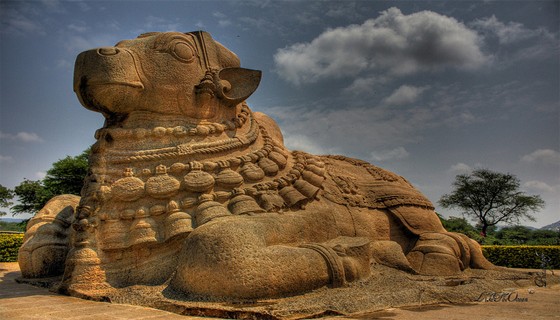Things that amuse and keep people spellbound are but natural to most of our Indian temples. The mysterious ritual or a myth associated to a temple is very well known. It is not about something that is invisible or something that is alien. There are some mysteries that are visible to naked eye. It could be an architectural miracle or a hidden treasury. One such temple is Lepakshi temple in Andhra Pradesh.

The hanging pillar in Lepakshi is a medieval architectural wonder to witness. This small village you were most likely to neglect has so much hidden in its treasure chest, you will be shocked and amazed! One such spectacle of Indian history to ponder over is the hanging pillar at the Veerabhadra Temple in Lepakshi, a small village in Andhra Pradesh, miraculously hidden from the searching but ignorant eyes of travellers.

The small village of Lepakshi in the Anantapur district of Andhra Pradesh is a paragon of excellent art and architecture. Once the quintessence of the ostentatious opulence of the empire of Vijayanagara, Lepakshi is an epitome of magnificence and brilliance. The shrines and temples in the village celebrating the might of Lord Shiva, Vishnu and Veerabhadra, are an exhibition of timeless art, with illustrious frescoes and murals.

Lepakshi – Its Origins
Lepakshi is a perfect getaway for a day trip from Bangalore being at just about 120 Kms distance. It is culturally and historically significant for India. Although the village was founded as late as 1538 AD by Maharaja Aliya Rama Raya of the Vijayanagara Empire, it has an interesting association with the Ramayana, and legend says was blessed by the presence of Lord Rama himself. The lore goes that when Lord Rama, met the dying bird Jatayu here, he helped him attain Moksha by saying the words “Le Pakshi”, which in Telugu means “rise bird”. Hence, the village got its name Lepakshi!

The most famous temple in the village is the temple of Veerabhadra, famed for its hanging towers. The temple is situated on a tortoise shaped hillock, named Kurma Saila, which is the Telugu phrase for its distinct shape.

Architectural Marvel
The most astonishing architectural marvel of Lepakshi is the Hanging Pillar of Veerabhadra Temple. The pillar does not rest on the ground completely but hangs in the air, with enough space between its base and the ground to pass a sheet of paper or a small twig through it- fully to emerge on the other side! Out of the 70 pillars at the stone temple, which was built in 1583 AD, in the Vijayanagar style of architecture by brothers Virupanna and Veeranna, this particular pillar stands out as a triumphant masterpiece of architecture. The Archaeological Survey of India has proven that this pillar was not constructed as a mistake, but was built intentionally to prove the brilliance of the builders of the time.

The Story of Hanging Pillar
The Veerabhadra Swamy Temple is calm, serene and has preserved its sanctity. The outer portion has a massive Dance Hall with numerous pillars supporting the roof. One corner pillar is the famous ‘hanging pillar‘ that does not touch the temple floor at all. Puzzled by this, a British engineer Hamilton tried to rectify this architectural aberration in 1910.
Though, he managed to make one corner of the pillar to touch the ground. It led to a tectonic shift in the roof of this outer hall, with distortion in roof alignment and pillars now leaning on and the roof paintings distorted. The engineer realized that any further attempt could instead ruin this entire edifice. Further research revealed that the pillar acted as ballast to the hall’s roof. Hence, a minor change could ruin this balance and cause irreparable damage to the structure.

In this Hall, statues of musicians and dancers striking poses are kept. A Gopalakrishna mural on the roof appears to be three dimensional and appears to look at you from any direction. Inside the temple complex there is a sculpture of a huge seven headed serpent carved from a single stone and positioned to protect the Shiva linga. Outside the temple premise, there are lot of pillars with carvings and paintings on the walls. One can also see one large foot print on one hillock and lot plates like carving throughout the surrounding.
=======
Must Read :Divine Mysteries : Padmanabhaswamy Temple and the case of mysterious Vault
Must Read : Dhanurmasam : Tiruppavai – Pasuram 9









